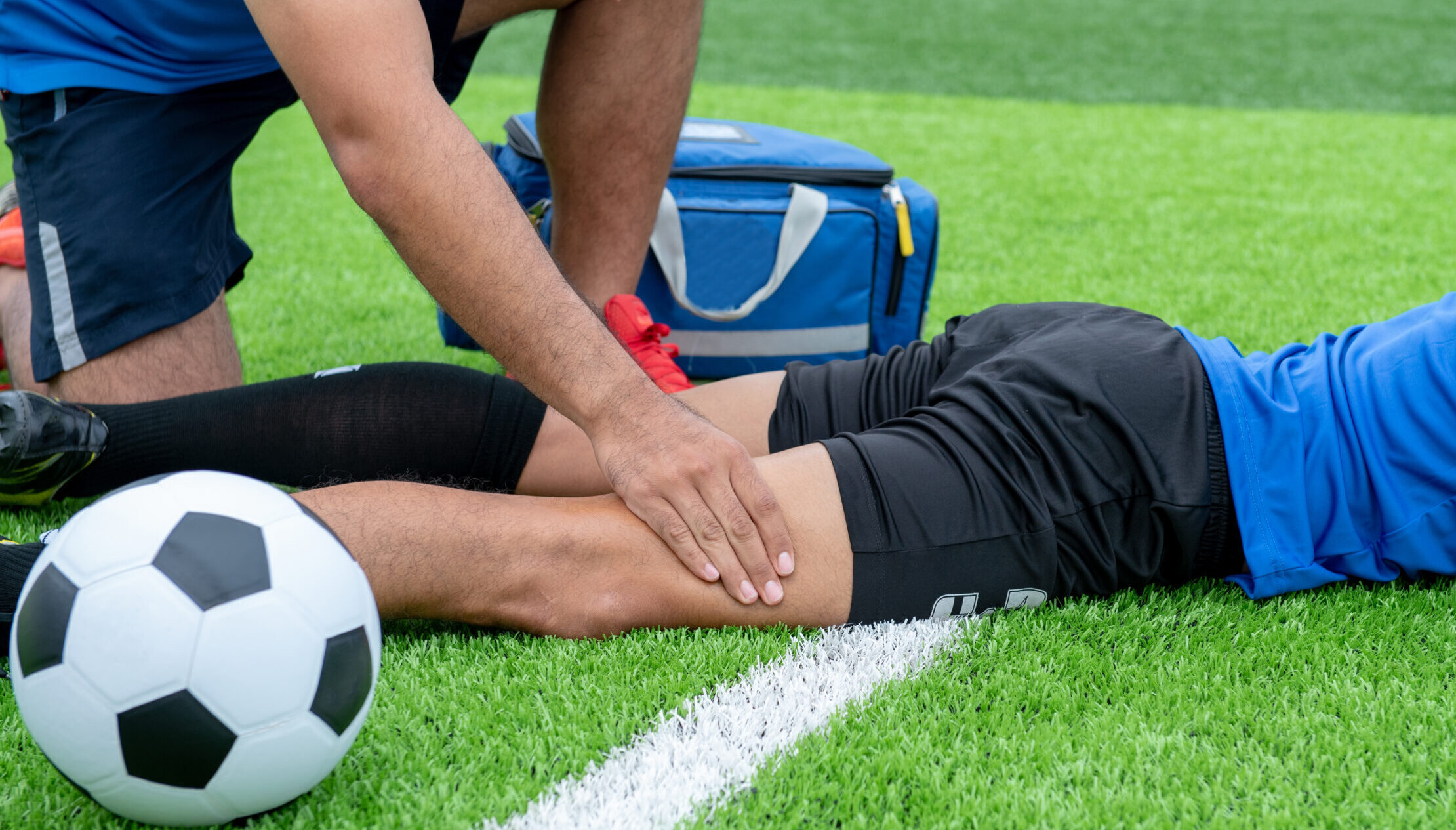How Can Sprinting Prevent Hamstring Injuries?
/
How Can Sprinting Prevent Hamstring Injuries?

Football has become more physically intense over the years (Malone et al., 2018). Nowadays, players cover between 10–12 km per game and perform all-out sprints roughly every 90 seconds (Di Salvo et al., 2007; Stølen et al., 2005). Hamstring injuries are the most common injury at elite level, representing 19% of all injuries. They have increased from 12% in 2001/02 to 24% 2021/22, partly due to increasing match demands (Ekstrand et al., 2023). Running or sprinting is the injury mechanism in 61% of hamstring injury cases (Ekstrand et al., 2023). While sprinting is a common mechanism of injury, it can play a dual role in hamstring injuries, as it also can serve as a component in injury prevention. But how can sprinting help to prevent hamstring injuries?

There are two types of mechanisms for sustaining a hamstring injury: stretch-type injuries and sprint-type injuries (Askling et al., 2012; Danielsson et al., 2020). This article will focus on the sprint-type injury. Maximal velocity sprinting results in significant biomechanical stress on the hamstrings, pushing them to the peak of their physiological capacity. (Bramah et al., 2024).
The late swing phase of the sprint cycle has been identified as the most likely moment to sustain a hamstring strain (Bramah et al., 2024; Danielsson et al., 2020). During this phase, the hamstring undergo rapid eccentric lengthening and reach maximal length as the knee reaches full extension just before the foot strike, while simultaneously producing high forces (Bramah et al., 2024; Danielsson et al., 2020). This leads to peak muscle activation, the highest lengthening velocity, and greatest negative work performed by the hamstrings at the same time. As a result, the risk of a hamstring strain increases, especially when the muscle is in a fatigued state (Bramah et al., 2024; Danielsson et al., 2020).
Hamstring injuries in football can be influenced by both non-modifiable and modifiable risk factors. Non-modifiable factors, which cannot be changed or controlled, include a history of previous injury and age (Green et al., 2020). Modifiable factors, such as eccentric knee flexor strength, can be changed or controlled, for example, by targeted training (Green et al., 2020; Petersen et al., 2011; Timmins et al., 2016). Stronger eccentric muscle contractions allow the hamstring to absorb greater force and potentially lead to a reduced strain on the hamstring (Petersen et al., 2011). Additionally, a shorter fascicle length in the biceps femoris long head (BFLH) increases susceptibility to hamstring strains (Green et al., 2020; Timmins et al., 2016). Shorter fascicles make the hamstring more prone to overstretching during powerful eccentric contractions, as in high-speed running (Timmins et al., 2016). The Nordic Hamstring Curl (NHC) has proven to be an effective exercise for reducing hamstring injuries by specifically addressing these modifiable risk factors (Bramah et al., 2024; Petersen et al., 2011). Petersen et al. (2011) found that a NHC protocol could reduce new hamstring injuries by 60% and recurrent injuries by 85% among football players.
Sprinting has also been identified as a risk factor, but it can potentially also help to lower the risk of sustaining a hamstring injury (Bramah et al., 2024; Green et al., 2020; Mendiguchia et al., 2022). Sprinting mechanics can play a big role in the mechanical strain placed on the hamstrings (Bramah et al., 2024; Mendiguchia et al., 2022). Instead of a single biomechanical factor causing hamstring injuries, a combination of multiple kinematic and kinetic factors, often related to movement quality and technical aspects, can influence the strain on the hamstrings and can cause an injury (Bramah et al., 2024; Mendiguchia et al., 2022). By including sprint training with a focus on refining sprint mechanics, athletes can improve their running technique, which may prevent them from hamstring injuries (Mendiguchia et al., 2022).
Back-side mechanics describes the degree of lower-limb movements occurring behind the centre of mass during sprinting (Bramah et al., 2024). Running with poor back-side mechanics results in longer stance phase and shorter flight times during sprinting. This gives the lower limb less time to reposition for the next foot contact, making faster limb switching more necessary (Bramah et al., 2024). These changes can lead to several compensatory mechanics, such as an increased forward trunk lean, anterior pelvic tilt, and overstriding. Such compensations can potentially elongate the hamstring strain and increase eccentric workload, which may raise injury risk (Bramah et al., 2024; Mendiguchia et al., 2022).
For athletes showing a poor back-side mechanics, focusing on front-side mechanics can help improve sprinting technique and decrease the chance of hamstring injuries (Bramah et al., 2024; Mendiguchia et al., 2022). Front-side mechanics refer to the actions and positions of the legs when they are in front of the body during a sprint (Haralabidis et al., 2022; Mendiguchia et al., 2022). Key aspects of good front-side mechanics include a high knee drive, bringing the knee to hip level. This prepares the foot to land closer to the centre of mass at initial ground contact (Haralabidis et al., 2022; Mendiguchia et al., 2022). This results in short, elastic ground contacts, allowing the leg to quickly transition back up for the next stride, which limits excessive backward leg movement and time spent during back-side mechanics (Haralabidis et al., 2022; Mendiguchia et al., 2022). This leads to a more neutral pelvic position and an upright posture, which decreases strain on the hamstring (Bramah et al., 2024; Mendiguchia et al., 2022). Placing the foot closer to the centre of mass at ground contact reduces the chance of overstriding (Haralabidis et al., 2022). Overstriding, where the foot is placed in front of the centre of mass, increases breaking forces and requires greater hamstring effort to reaccelerate the centre of mass during HSR (Bramah et al., 2024; Haralabidis et al., 2022). Repeated sprints can lead to early fatigue, weakening the hamstring’s capacity to resist strain and increasing the risk for a fatigue-related injury (Bramah et al., 2024; Malone et al., 2018). Improving an athlete’s sprint mechanics takes time and ask for consistent practice (Mendiguchia et al., 2022).

Another risk factor for hamstring injury is player load, particularly in relation to high-speed running (HSR). A large and rapid increase in player load, especially in HSR (defined as speeds ≥19.8 km/u), is considered a significant risk factor for hamstring injuries (Buckthorpe et al., 2019; Duhig et al., 2016; Green et al., 2020; Malone et al., 2018). A rise in HSR during the week prior to an injury is associated with a 6.4-fold higher risk of sustaining a hamstring injury (Duhig et al., 2016). Underloading, or insufficient exposure to HSR, can also increase injury risk (Malone et al., 2018). Malone et al. (2018) found that players who ran low HSR distances (total weekly sprint distance of ≤165 m) had an increased risk of injury, as underexposure to HSR can result in muscles, especially the hamstring, not being good enough prepared for the demands of a match. This shows the importance of carefully managing the players’ load to reduce the risk of injury.
Getting enough HSR load in training sessions, matches, or extra linear HSR can reduce the risk of sustaining a hamstring injury (Buckthorpe et al., 2019; Green et al., 2020; Malone et al., 2018). Gradually increasing chronic workload, while avoiding acute load spikes, can enhance players’ physical tolerance to higher loads, thereby reducing the risk of hamstring injuries (Buckthorpe et al., 2019; Malone et al., 2018). This progressive load increase should include week-to-week variations, including deload periods for recovery and overload phases that lead to adaptation (Buckthorpe et al., 2019). The acute:chronic workload ratio (ACWR) should be kept in a range of approximately 0.8–1.3, as a higher ACWR is a risk factor for hamstring injuries (Buckthorpe et al., 2019; Gabbett, 2016). A high ACWR can result from low chronic training or a busy match schedule (Buckthorpe et al., 2019).
In football training, the focus is often placed on small-sided games to replicate the physical intensity and movement patterns of match play. However, the use of smaller spaces limits exposure to HSR (Buckthorpe et al., 2019; Dello Iacono et al., 2023). Since the greatest exposure to HSR occurs during a match, it is important to align training HSR with match demands (Buckthorpe et al., 2019). This can for example be done by offering the players extra linear HSR during or after training (Buckthorpe et al., 2019; Malone et al., 2018). Additionally, substitutes who play little or no minutes during a match should complete HSR top-ups afterward to keep a similar physical load schedule to the main squad (Buckthorpe et al., 2019). These players are often at risk when suddenly required to play, which can lead to spikes in their acute load (Buckthorpe et al., 2019; Duhig et al., 2016; Malone et al., 2018). Ensuring players receive sufficient acute HSR exposure and progressively increasing their HSR load over time can help reduce the risk of hamstring injuries.
To conclude, even though sprinting is the most common mechanism of hamstring injuries, it is also crucial for prevention among football players. It is important that players are exposed to the appropriate HSR load and that their chronic load is gradually increased, as this enhances their physical tolerance. Additionally, sprinting should be practiced with the goal of improving sprinting mechanics, with a focus on improving front-side mechanics. The risk of hamstring injuries is reduced by improved sprint mechanics, as this decreases the eccentric workload and strain on the hamstrings, thereby lowering the risk of hamstring injuries. This shows that sprinting can prevent hamstring injuries, but it is important to note that injury prevention takes a well-rounded approach involving multiple prevention strategies.
Practical implications:
- Monitoring acute and chronic load to make sure that players have adequate HSR exposure.
- Maintaining an ACWR between 0.8-1.3 to avoid overload or underload.
- Optimize front-side mechanics to improve sprint mechanics and lower the eccentric workload and strain on the hamstring
References:
Askling, C. M., Malliaropoulos, N., & Karlsson, J. (2012). High-speed running type or stretching-type of hamstring injuries makes a difference to treatment and prognosis. British Journal of Sports Medicine, 46(2), 86–87. https://doi.org/10.1136/bjsports-2011-090534
Barnes, C., Archer, D., Hogg, B., Bush, M., & Bradley, P. (2014). The Evolution of Physical and Technical Performance Parameters in the English Premier League. International Journal of Sports Medicine, 35(13), 1095–1100. https://doi.org/10.1055/s-0034-1375695
Bramah, C., Mendiguchia, J., Dos’Santos, T., & Morin, J.-B. (2024). Exploring the Role of Sprint Biomechanics in Hamstring Strain Injuries: A Current Opinion on Existing Concepts and Evidence. Sports Medicine, 54(4), 783–793. https://doi.org/10.1007/s40279-023-01925-x
Buckthorpe, M., Wright, S., Bruce-Low, S., Nanni, G., Sturdy, T., Gross, A. S., Bowen, L., Styles, B., Della Villa, S., Davison, M., & Gimpel, M. (2019). Recommendations for hamstring injury prevention in elite football: Translating research into practice. British Journal of Sports Medicine, 53(7), 449–456. https://doi.org/10.1136/bjsports-2018-099616
Danielsson, A., Horvath, A., Senorski, C., Alentorn-Geli, E., Garrett, W. E., Cugat, R., Samuelsson, K., & Hamrin Senorski, E. (2020). The mechanism of hamstring injuries – a systematic review. BMC Musculoskeletal Disorders, 21(1), 641. https://doi.org/10.1186/s12891-020-03658-8
Dello Iacono, A., McLaren, S. J., Macpherson, T. W., Beato, M., Weston, M., Unnithan, V. B., & Shushan, T. (2023). Quantifying Exposure and Intra-Individual Reliability of High-Speed and Sprint Running During Sided-Games Training in Soccer Players: A Systematic Review and Meta-analysis. Sports Medicine, 53(2), 371–413. https://doi.org/10.1007/s40279-022-01773-1
Di Salvo, V., Baron, R., Tschan, H., Calderon Montero, F., Bachl, N., & Pigozzi, F. (2007). Performance Characteristics According to Playing Position in Elite Soccer. International Journal of Sports Medicine, 28(3), 222–227. https://doi.org/10.1055/s-2006-924294
Duhig, S., Shield, A. J., Opar, D., Gabbett, T. J., Ferguson, C., & Williams, M. (2016). Effect of high-speed running on hamstring strain injury risk. British Journal of Sports Medicine, 50(24), 1536–1540. https://doi.org/10.1136/bjsports-2015-095679
Ekstrand, J., Bengtsson, H., Waldén, M., Davison, M., Khan, K. M., & Hägglund, M. (2023). Hamstring injury rates have increased during recent seasons and now constitute 24% of all injuries in men’s professional football: The UEFA Elite Club Injury Study from 2001/02 to 2021/22. British Journal of Sports Medicine, 57(5), 292–298. https://doi.org/10.1136/bjsports-2021-105407
Gabbett, T. J. (2016). The training—injury prevention paradox: Should athletes be training smarter and harder? British Journal of Sports Medicine, 50(5), 273–280. https://doi.org/10.1136/bjsports-2015-095788
Green, B., Bourne, M. N., Van Dyk, N., & Pizzari, T. (2020). Recalibrating the risk of hamstring strain injury (HSI): A 2020 systematic review and meta-analysis of risk factors for index and recurrent hamstring strain injury in sport. British Journal of Sports Medicine, 54(18), 1081–1088. https://doi.org/10.1136/bjsports-2019-100983
Haralabidis, N., Colyer, S. L., Serrancolí, G., Salo, A. I. T., & Cazzola, D. (2022). Modifications to the net knee moments lead to the greatest improvements in accelerative sprinting performance: A predictive simulation study. Scientific Reports, 12(1), 15908. https://doi.org/10.1038/s41598-022-20023-y
Malone, S., Owen, A., Mendes, B., Hughes, B., Collins, K., & Gabbett, T. J. (2018). High-speed running and sprinting as an injury risk factor in soccer: Can well-developed physical qualities reduce the risk? Journal of Science and Medicine in Sport, 21(3), 257–262. https://doi.org/10.1016/j.jsams.2017.05.016
Mendiguchia, J., Castaño-Zambudio, A., Jiménez-Reyes, P., Morin, J., Edouard, P., Conceição, F., Tawiah-Dodoo, J., & Colyer, S. L. (2022). Can We Modify Maximal Speed Running Posture? Implications for Performance and Hamstring Injury Management. International Journal of Sports Physiology and Performance, 17(3), 374–383. https://doi.org/10.1123/ijspp.2021-0107
Petersen, J., Thorborg, K., Nielsen, M. B., Budtz-Jørgensen, E., & Hölmich, P. (2011). Preventive Effect of Eccentric Training on Acute Hamstring Injuries in Men’s Soccer: A Cluster-Randomized Controlled Trial. The American Journal of Sports Medicine, 39(11), 2296–2303. https://doi.org/10.1177/0363546511419277
Stølen, T., Chamari, K., Castagna, C., & Wisløff, U. (2005). Physiology of Soccer: An Update. Sports Medicine, 35(6), 501–536. https://doi.org/10.2165/00007256-200535060-00004
Timmins, R. G., Bourne, M. N., Shield, A. J., Williams, M. D., Lorenzen, C., & Opar, D. A. (2016). Short biceps femoris fascicles and eccentric knee flexor weakness increase the risk of hamstring injury in elite football (soccer): A prospective cohort study. British Journal of Sports Medicine, 50(24), 1524–1535. https://doi.org/10.1136/bjsports-2015-095362
Contact Information
Have questions or need expert guidance? Get in touch and let’s work together to elevate your performance!
Contact
- (+31) 6 138 569 83
- info@timvanhoorn.blog
- Groningen, The Netherlands
© 2025 Tim van Hoorn • All Rights Reserved

